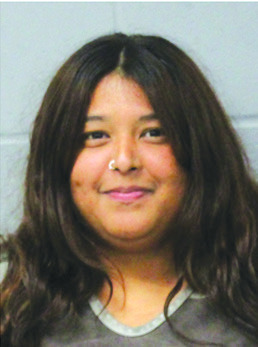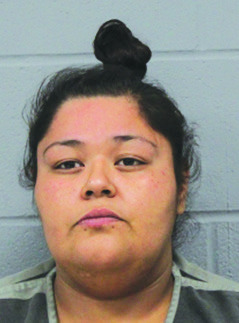by April Dembosky
 |
A
UCSF doctor helped lead the first major update in over 50 years to how
traumatic brain injuries are assessed — going beyond the Glasgow Coma
Scale to include CT and MRI scans, biomarkers and other health factors. (Lu ShaoJi/Getty Images) |
For the first time in over 50 years, emergency room doctors will have a new framework to assess people with
head injuries from car or bike crashes, falls and assaults.
Existing assessment protocols for traumatic brain injury rely on
broad, vague measures that filter patients into three categories based
on their symptoms: mild, moderate and severe. Doctors hope the new
classification system, published Tuesday in The Lancet Neurology, will bring more detail to diagnosis and more nuance to treatment.
“Patients labeled as ‘mild’ TBI were told they could go back to work
in a couple days. Six weeks later, they’ve got pounding headaches,
problems with their visual system, they’re not sleeping well. There’s
nothing mild about that,” said Dr. Geoff Manley, professor of
neurosurgery at UCSF and lead author of the new framework.
“On the other hand, there are patients that
were diagnosed with ‘severe’ TBI leading full lives, whose families had
to consider removing life-sustaining treatment,” he added.
Most people have a 50% chance of experiencing a traumatic brain
injury in their lifetime, Manley said. About 40% of those diagnosed with
mild injury, or concussion,
never see a doctor, and about half diagnosed with severe injury are
withdrawn from ventilators and allowed to die — a decision made, on
average, after three days.
The same day Scott Hamilton crashed his Vespa on Market Street in San
Francisco and slid 60 feet into the curb, doctors at San Francisco
General Hospital recommended disconnecting his life support machines.
“They told my wife: ‘He’s got a 1 in 10 chance of ever coming out of
his coma, and if he does, he’s got a 1 in 20 chance of your thinking
that was a good idea. He’s unlikely to live the night and I think you
will consider that a blessing,’” Hamilton said.
 |
| A new classification system, developed by a
coalition of 94 experts and patients across 14 countries, aims to
improve brain injury assessment through a four-part framework: clinical
evaluations, advanced imaging, blood tests and consideration of key
demographic factors. (Tom Werner/Getty Images) |
But Manley saw it differently and insisted
his bosses give Hamilton more time. He made a full recovery. Twenty
years later he’s married, working full time, and raising two teenage
daughters.
“I lose a lot of sleep at night wondering if I’m doing the right
thing,” Manley said. “We certainly don’t want to create someone with
profound disability long-term, but we have to give people time to
recover.”
The new classification system, developed by a coalition of 94 experts
and patients across 14 countries, is intended to make those decisions
easier by making assessments more objective, detailed and precise.
The new framework is made up of four pillars: an expanded clinical
evaluation; new blood tests; CT and MRI scans; and a review of
demographic factors known to affect recovery times, like age, sex,
family support, and a history of previous head injuries or mental health
conditions.
Clinical assessments under the new system require doctors to be more
exacting when scoring eye, verbal and motor function and to use new
tools to measure pupil function.
New biomarker blood tests, developed by the military, help identify
tissue damage and determine which patients need imaging and which can be
spared the cost and radiation exposure of an unnecessary scan.
Where indicated, CT and MRI scans can reveal bleeding, blood clots or
fractures that require surgery. Or they could show that a patient is
doing better than their clinical presentation alone would indicate, as
was the case for Hamilton.
The final pillar requires taking an extensive
medical and social history of the patient to look for factors likely to
affect recovery time. People who are older, women and those with a
history of concussions, headaches or mental health problems usually take
longer to recover.
“If you don’t ask about these elements, you may miss an opportunity
to offer a more realistic prognosis to the patient,” said Dr. Cathra
Halabi, director of UCSF’s Neurorecovery Clinic, which includes a
program focused on people in the first six months after a traumatic
brain injury.
While the new TBI assessment framework is geared primarily toward
physicians treating people in acute settings within the first 24 hours
of an injury, Halabi said it extends naturally to clinicians like her
who see people longer term in an outpatient setting.
More detailed assessments will help doctors better determine who
needs urgent care and who doesn’t, who needs follow-up care and who
doesn’t. They also have the potential to improve clinical trials,
bringing more precision to patient selection and a better likelihood of
discovering new effective treatments.
Under the current system, Halabi frequently receives patient charts from the ER that say, “Bicycle accident, mild TBI.”
She expects the new classification will yield a thorough diagnostic
description along the lines of: “Thirty-year-old woman, helmeted bicycle
accident, blunt head injury, brief loss of consciousness, peritraumatic
amnesia. CT scan negative for bleeding. Experiencing double vision,
emotional dysregulation. History of migraines and depression.”
The additional data will inform Halabi on how to properly care for
this patient from the moment she comes into her clinic, and to be on the
lookout for lingering and emerging symptoms like sleep impairments or
endocrine dysfunction that could complicate healing.
“I’ve seen all sorts of bicycle accidents with mild TBI, and every
single person is different,” she said. “Unless you really ask and probe a
bit more deeply on the other side of the acute phase, you may miss an
opportunity to find an element of the case that’s going to help make
that person recover.”
Full Article & Source:
Evaluation of Traumatic Brain Injuries Gets Its First Overhaul in 50 Years












 alerted
to possible Elder Abuse occurring at a residence in the 1600 block of
Esplanade Way in Yuba City. The report stated two elderly victims,
possibly with diminished faculties, had suspiciously appeared on a deed
to an address in the 1100 block of Blackberry Drive in Yuba City.
alerted
to possible Elder Abuse occurring at a residence in the 1600 block of
Esplanade Way in Yuba City. The report stated two elderly victims,
possibly with diminished faculties, had suspiciously appeared on a deed
to an address in the 1100 block of Blackberry Drive in Yuba City.